Introduction
Established in the region of the Andean Mountains, the Inca Empire constitutes a great civilization that ruled a broad portion of land in the South American territory. According to a story of mythical nature, the Incas settled initially in the region of Cuzco and its first great leader was Manco Capac. Because of the more favorable geographical conditions, the Inca presence focused primarily in the central region of the Andes.
Around the 15th century, the Incas established a process of territorial expansion which sought the plateaus situated between the Andean Mountains and plains of the Pacific coasts. Under the tutorship of the Emperor Pachacuti Yupanqui, other populations were military subordinate to the Inca power. Hence, the civilization began to look like a great empire.
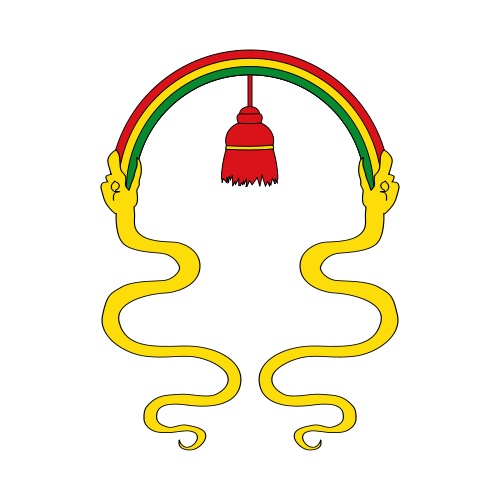
Banner of the Inca Empire. (Photo credit: Wikimedia Commons)
The “Inca” was the most important political authority among the Inca people. Venerated as the descendant of the sun god Inti Raymi, the emperor was the main keeper of all property belonging to the State, including ownership of the land. The cultivable land was divided into three distinct portions: the land of the Inca attributed to the king and his family, the land of the sun god, controlled by the priests, and the land of the population.
In a general view, the elite of the Inca society was composed of the royal family and the occupants of important political and administrative positions (priests, military chiefs, judges, provincial governors and wise men). Immediately below them, in an intermediate position, there were the merchants and artisans who guaranteed the commercialization of goods who attested the presence of a rich material culture.
The peasants organized themselves through an extensive family group which was known by the name of “ayllu”. Each ayllu group worked in different fields of the society such as farms, military system, and their work were arranged by an older leader called “curaca”. In general, each of these production units was equipped with a large warehouse for food and clothes storage used in many situations.
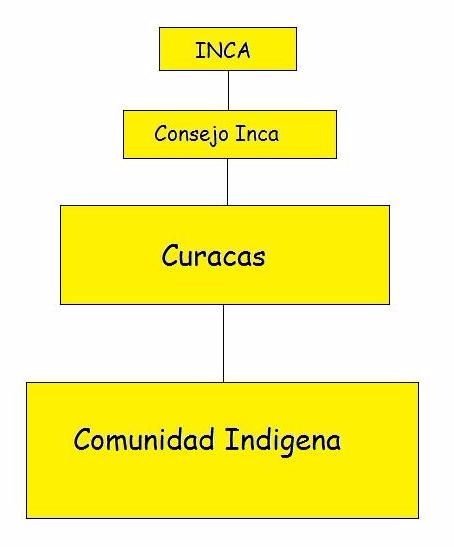
Pyramid showing the Inca classes. (Photo credit: Wikimedia Commons)
The Inca’s religion was marked by the worship of various elements of nature such as the sun, the moon, the thunder and the wind. In the Inca’s religion value system, all the benefits achieved should be compensated with some kind of sacrifice that expressed the gratitude of men. Because of this fact, we observe that the Incas organized various rituals where the sacrifices, including human, were common.
To connect the cities in the domains of the Inca Empire, a series of stone roads was built with the sole purpose to facilitate communication and the dislocation of people. It is worth mentioning that the Inca cities had several complex architectural projects including the construction of palaces, fortresses, and temples with surprising dimensions.
In the 16th century, moment that marked the arrival of the Spaniards to the Americas, the Inca civilization suffered from a series of internal conflicts. Taking advantage of this instability, the European settlers waged a violent process of domination. In the year 1571, the remnants of this civilization were subordinated soon after their leader’s Tupac Amarú I.
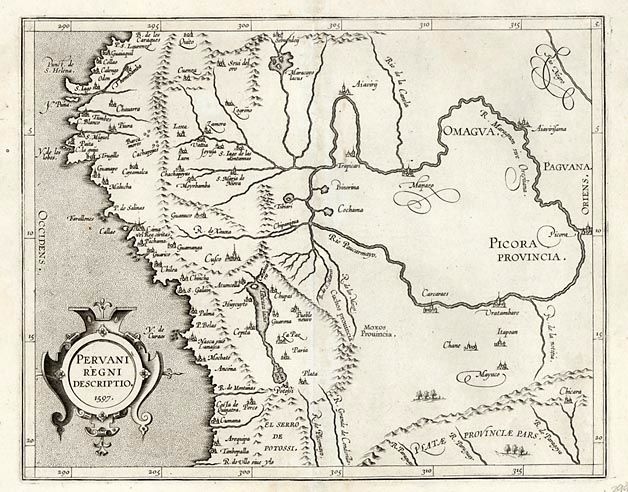 Spanish colony of Peru in 1597. (Photo credit: Wikimedia Commons)
Spanish colony of Peru in 1597. (Photo credit: Wikimedia Commons)
The History of the Inca’s Civilization
The Incas were one of the most civilized people of the Americas. They were composed mainly of individuals from the Quéchuas, Aymará, Yunka and other minor tribes, and the name “Inca” came from the Quéchuas, the main group in the region. The Incas inhabited the region now occupied by Ecuador, Peru, western Bolivia, northern Chile and northwest Argentina. More than 10 million citizens had merged in this political and cultural unit of a high level. Physically, the Incas were of small stature, brown skin, ranging from light to dark brunette, black hair and smooth almost shaven faces. In terms of social and political organization, according to the Spanish testimony, they were perfect, owners of a genuine community spirit.
They worshiped the sun reincarnated in every Inca or in the emperor, who was the son of the great sun. This way, the emperor was considered a god among the people. The dead were buried not only in temples, but also in towers and tomb cages called “Chullpas”. The Inca Temples were big and sumptuous, but some of them could resemble like simple houses on the ground level, with small dimensions. One of the aspects that stresses the Inca culture the most was the solution they gave to the problem of communications, which presented serious difficulties in the Andean region. They established a complex network of streets and ways and a permanent group of messengers, known as “Tiasques” responsible for transmitting the news. 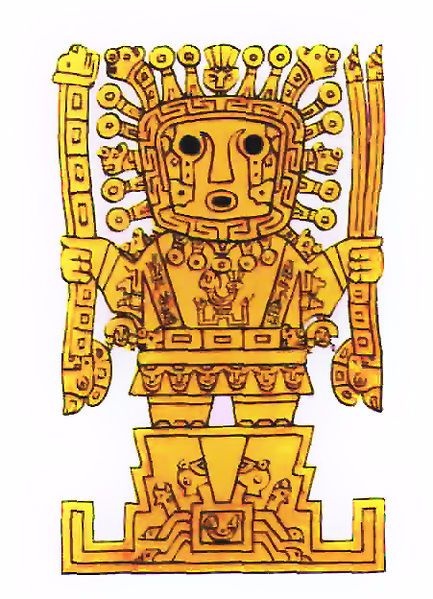
Inca Emperor depicted as a god. (Photo credit: Wikimedia Commons)
In the agricultural field, they practically achieved a remarkable development that could be seen and demonstrated by his irrigation system through the mountains. They also widely used metals such as copper, bronze, gold, silver, which arouse the conqueror’s greed.
In 1553, the country was conquered by Pizarro and submitted to the Spanish Crown. The Inca culture was totally destroyed and, today, only ruins of their great monuments, temples, and palaces can be found in the region.
For a long time, the historiography considered the Inca State as a “lost paradise”, in which there was no hunger, exploitation, and violence. These events encouraged the imagination of novelists, scholars, and researchers, who sought to discover alien influences or the construction of the first communist State in American lands.
Characteristics
The State kept a tax system that was charging taxes to keep the old and the seek population, and to provide food in times of poor harvest, with a ruler that the Inca ideology claimed to be the son of the sun, meaning the sun offered divine protection and social order.
It is really extraordinary that a civilization has extended its power over 4000 kilometers along the Andes Mountains without even using a wheel and road to transport agricultural surpluses, and caused the appearance of civilizations in other parts, because the Incas, with their engineering techniques created great constructions that would be a difficult task even for the modern engineering.
The Incas were great builders. Without the aid of mortar, they built walls so perfectly adjusted that it was impossible to insert the blade of a knife between the stones. The thousands of kilometers of roads linked the four provinces or frontiers, as they used to call them, to the capital city Cuzco, were considered superior to anything that existed at that time in Europe. Although the pavement of smooth stones could have been designed for vehicles, in a society without horses and without using a wheel, everybody used them on foot. These roads transposed rivers through bridges were so solid and strong that many of them have been used yet in the 20th century.
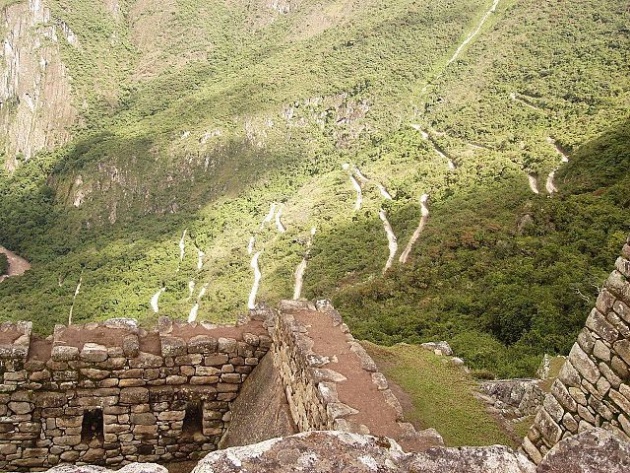 Street used to reach Machu Picchu. (Photo credit: Wikimedia Commons)
Street used to reach Machu Picchu. (Photo credit: Wikimedia Commons)
A society that taxed people and production should possess a sophisticated control scheme. The Inca State knew the amount of men, women, and children of each ayllu, knew about the number of individuals who could count on to assemble an army without affecting production, knew about how much manpower was needed to build a bridge and when to order its construction. The State also knew about the needs of food, clothing, and weapons to support the population during wars.
The secret of this accounting without computers were the “quipos”, long ropes to which several small strings were tied, where different types of nodes were made meaning a different thing in the Inca accountancy. The “quipucamayocs” were responsible for this accounting and if they committed a mistake, they were penalized being killed.
Summary of the Inca’s History
20000 – 100 BC
About 20000 years ago, tribes of hunters who crossed the Strait of Bering heading south and arrived in the land that we nowadays call South America. Around the year 5000 BC, inhabitants of the mountainous regions began to grow food and to live in permanent settlements. Around 2000 BC, the fishermen who inhabited the coast also began to build permanent housing. By the year 1200 BC, the inhabitants of the coastal zone grew corn, produced good quality clothes and pottery. At the same time, the first important civilization named Chavin arose in the mountainous area. By the year 100 BC, the northeast coast housed a kingdom whose capital was the city of Moche and in the south region, there was also another kingdom whose main city was Nazca.
100 BC – 1100 AD
The first civilization that flourished in the mountainous region had its capital in Tiahuanaku. Around the year 800 AD, the inhabitants of Tiahuanaku had already conquered the southern coast. In the year 1000, Peru was formed by a group of warrior tribes without any powerful leaders. It was at that time that the Chimú Empire reigned in the area.
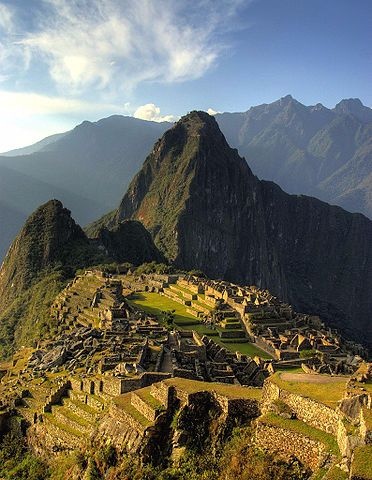 Old city of Machu Picchu. (Photo credit: Wikimedia Commons)
Old city of Machu Picchu. (Photo credit: Wikimedia Commons)
1100 – 1430 AD
The Inca Manco Capac, known as the founder of Inca’s culture, settled in Cuzco, However, the tribes from the north had formed the Reign of Chimú on the north coast. They built great cities according to a rectangular plan, surrounded by huge stone walls.
In Cuzco, the Incas became more powerful. Manco’s son, Sinchi Roca, just like his father, ruled half of Cuzco and did nothing to transform his family into a powerful one. He encouraged the extraction of minerals and weaving and was a great patron of agriculture. But his son Capac Yuapanki, born when Sinchi Roca was an old man, expanded the Inca territory to all Cuzco. Roca was the first to be named Sapa Inca (the Supreme Inca). A large part of his reign suffered in constant disputes with the Chancas tribes. The Inca Roca succeeded Yahuar Huacac who was threatened by an alliance formed by the tribes located in the mountains. Wiracocha, his son, also suffered attacks but managed to repel the invaders. However, he ended up running away from Cuzco when the Chancas tribes endangered his kingdom.
1430 – 1493 AD
The son of Wiracocha, Inca Yuapanki, succeeded him on the throne. He was victorious in the battles against the Chancas tribes, killed their king, and to strengthen his position in the mountainous area, proposed peace to the other tribes and offered Inca women to their leaders. He rebuilt Cuzco, turned it into the capital city, and organized a governing system with Inca officials, which led each tribe in an egalitarian way within the Empire.
When his son Inca Tupac Yuapanki completed 15 years old, he was sent to the northern territory in order to try and persuade the people living in that region to became part of the Inca Empire. Soon after a lot of arrangements, part of the reign of Chamú was annexed to Yuapanki’s empire. When Inca Yuapanki retired, his heir held the throne. Inca Tupac conquered the tribes who inhabited the Amazon forests, was victorious against the rebel tribes around Lake Titicaca and took his Empire down south until Chile. He died in Cuzco in 1493.
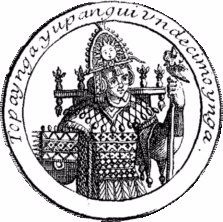 Picture of Tupac Yuapanki. (Photo credit: Wikimedia Commons)
Picture of Tupac Yuapanki. (Photo credit: Wikimedia Commons)
1493 – 1572 AD
Huayna Capac came to the throne at an early age and it was not a problem to the Empire. He married a Princess of Quito and she gave him a son, Atahualpa. But to become a Sapa Inca, he married his sister and they had a son, Huáscar. At that moment, in the south part of the Empire, in the borders of Chile and Peru, a tribe attacked. Among the warriors there were also some Spaniards trying to invade through that border. These Spaniards spread an epidemic of smallpox that devastated the region and eventually killed Huayna Capac in 1525.
The Inca Huáscar ascended the throne, but an internal governmental problem stated that Quito should be inherited by Atahualpa. In 1532, a civil war between the two half-brothers began and Atahualpa eventually imprisoned the whole country in an effort to imprison Huáscar and he managed to do so. In the same year, Francisco Pizarro arrived in Peru with a small Spanish army. During the first few months, they were gradually conquering the coastal zone, when they finally faced the Inca army. The Spanish army prepared a trap to capture Atahualpa and they were successful. Two years later, the Spaniards had conquered all the Tawantinsuyu (Inca Empire).
Documentary about the Inca Empire. (Video credit: Youtube)
Coming soon: The Inca Empire – History of a Civilization – Part II
Thanks for reading!



